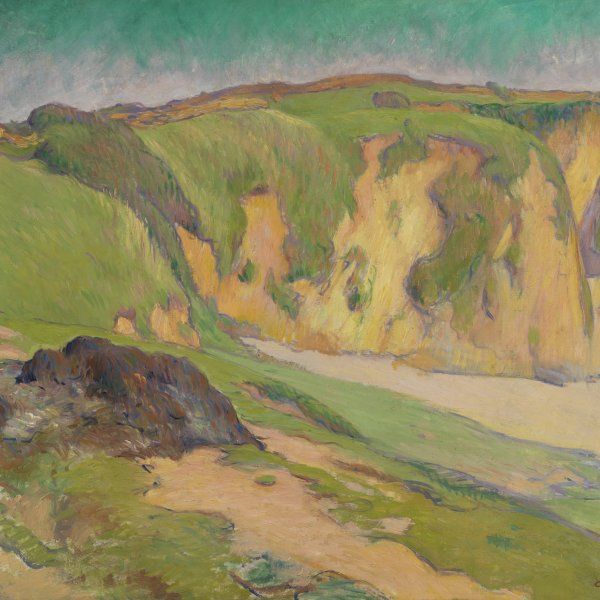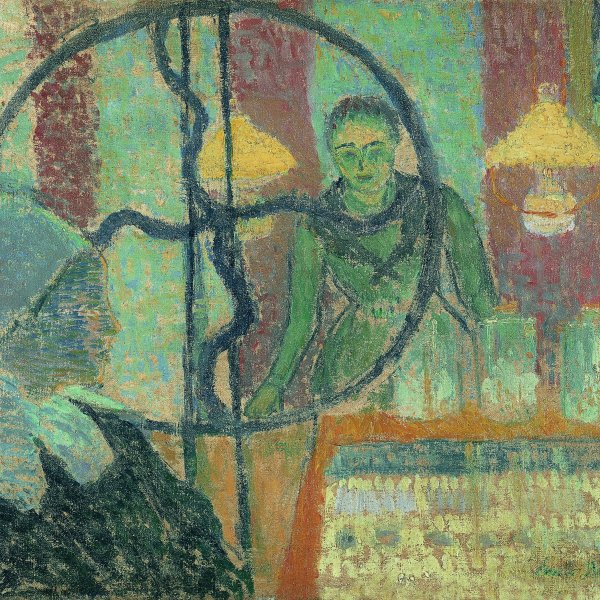Emile Bernard
Émile Bernard was born on 26 April 1868, in Lille, where his father worked in the wholesale fabric trade. In 1881 he moved to Paris with his family. By July 1884 he had decided to become a painter, and his parents enrolled him at the Atelier Cormon, where he remained for twelve months, before being dismissed for insolence and disturbance. His first journey on foot through Bretagne took place from April to October 1886. He stayed in Saint-Briac and later in Pont-Aven, where he met Gauguin for the first time, but with no consequences. When he returned to Paris, he met Van Gogh and often went to Père Tanguy's, where the avant-garde was taking shape. In 1887 Bernard stayed first in Saint-Briac, then in Pont-Aven. He abandoned Pointillism for an elaborate cloisonnism with Anquetin. In August 1888 Bernard was Pont-Aven with his sister Madeleine. From an artistic point of view, Bernard and Gauguin were at a turning point in their artistic evolution; they both moved towards the synthetic simplification of the representation of an idea, from which the Symbolism of Pont-Aven derived. In 1891 Bernard and Gauguin definitively fell out. The break was due to Bernard's grudge against Gauguin, for he felt that his part in the creation of artistic Symbolism had not been acknowledged. He spent the summer in Saint-Briac. In 1892 he spent some time in Pont-Aven where he met Renoir. In 1893, thanks to the financial help of his patron Antoine de la Rochefoucaud, he set off for Constantinople. He settled down in Egypt, where he married and lived until 1903, with a break in 1896 when he travelled to Seville, in Spain, where he met the painter Zuloaga. Moving back to France in 1904, after a stay in Venice, he visited Cézanne in Aix-en-Provence, and settled down in Tonnerre, in Bourgogne. He travelled again to Pont-Aven in 1939-1940, and died in 1941 in Paris in his studio at 15, quai Bourbon, leaving a considerable number of paintings. A gifted child, a self-taught adolescent who shunned constrictions, this creative, avant-garde young man destroyed himself in a fight against that same avant-garde he had helped to create. His rivalry with Gauguin led him out of spite along a different path: classicism. This change took place when he was living in the Middle East, in a period of great crisis. But the fact remains that the young Bernard played an essential part as an initiator for Gauguin, and that he was the inventor of a new artistic vision.
Catherine Puget







